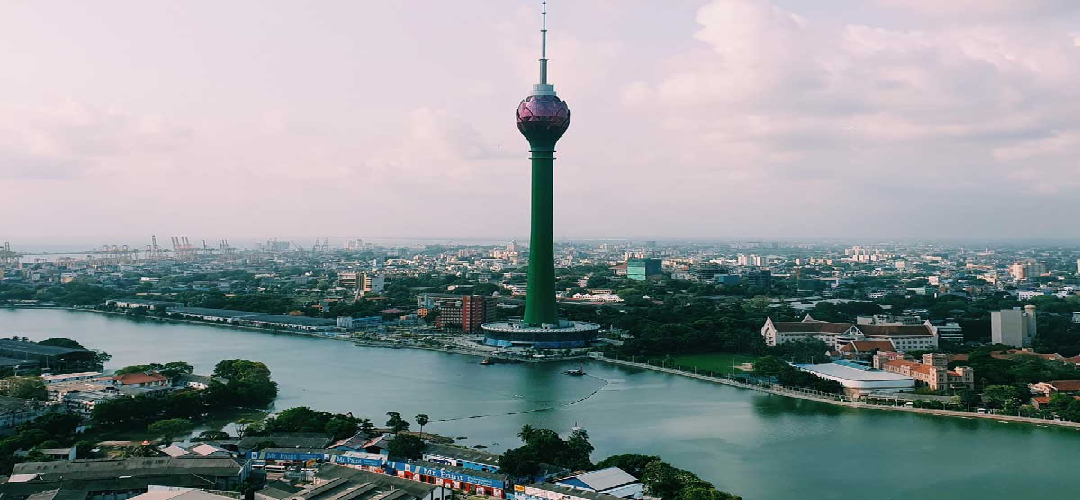Sri Lanka: On the Mend
December 30, 2023 | Expert Insights

Only six months back, our little neighbour Sri Lanka was staring into an economic abyss with no bottom. An unpopular government had been 'chased' out of power with live TV images showing crowds ransacking the Presidential Palace. As inflation reached a catastrophic 40 per cent and food prices rocketed to a rise of 60 per cent, many citizens skipped meals to survive. Things could not have been worse for Pearl Island, once a beacon of South Asian prosperity.
As we go into the new year, there is much optimism in Sri Lanka about its economic outlook. "Sri Lanka has carried out critical reforms since the start of the economic crisis. Staying the course on reforms while managing fiscal risks is crucial to restoring a sustainable growth path. Current efforts to mobilise tax revenue should be coupled with continued reforms towards transparency of expenditures to build public confidence and to deliver better public services,” says Mr Faris Hadad-Zervos, World Bank Country Director, in the 2023 World Bank Economic Update.
2023 marked the 75th anniversary of Indo-Sri Lankan diplomatic relations, a good year for both as it saw their relations greatly strengthened by an open acknowledgement in Sri Lanka of India’s role in its economic rescue and the role played by India in securing the IMF loan.
But the question remains, especially for Sri Lanka, how to leverage this growing partnership for a sustained economic recovery.
Background
India's commitment goes beyond mere pronouncements; it manifests in a comprehensive, multi-pronged approach aimed at pulling the island nation back from the brink. At the heart of this approach lies financial support. Recognising the urgency of the situation, India became the first and largest creditor nation to extend vital financial assurances to Sri Lanka. This paved the way for an IMF bailout package, a lifeline thrown in the nick of time. The sheer volume of India's support, exceeding USD 4 billion and even surpassing the anticipated IMF loan, stands as a testament to India's unwavering commitment to Sri Lanka's well-being.
The IMF approved a $2.9 billion bailout package in 2023, paving the way for a cascade of financial assistance. Bilateral creditors like China, Bangladesh, and Pakistan also extended vital loans and financial aid, demonstrating regional solidarity. Multilateral institutions like the World Bank and the Asian Development Bank (ADB) joined in, pouring over $1 billion into emergency loans and grants focusing on critical areas like food security, social safety nets, renewable energy, and trade. Through agencies like the World Food Programme and the UN Development Programme, the United Nations became a lifeline for Sri Lankans facing humanitarian hardships.
Beyond immediate financial assistance, India has also stepped up to offer diplomatic backing. Actively participating in Sri Lanka's debt restructuring process, India co-chairs the creditors' committee alongside Japan and the Paris Club. This collaboration sends a powerful message of solidarity on the international stage, lending crucial weight to Sri Lanka's efforts to restructure its debt and regain economic stability.
But India's vision extends beyond crisis management. Recognising the importance of long-term economic revival, India emphasises trade and investment as key drivers of Sri Lanka's future prosperity. As Sri Lanka's largest trading partner, India offers a vast market brimming with potential. Initiatives like the proposed Economic and Technical Cooperation Agreement (ETCA) aim to further unlock this potential, streamlining trade procedures and fostering deeper economic integration. While holding certain concerns for some in Sri Lanka, this ambitious agreement ultimately presents a golden opportunity to tap into India's booming economy and attract much-needed foreign investment.
By providing immediate financial support, offering diplomatic backing, and pushing for closer trade and investment ties, India's multi-pronged approach demonstrates a genuine commitment to Sri Lanka's revival. This support, however, is not meant to be a permanent crutch. Instead, it serves as a springboard, propelling Sri Lanka towards self-sufficiency and long-term economic stability.

Analysis
While India's immediate support has provided Sri Lanka with a much-needed oxygen mask, the island nation needs to shift its gaze towards longer-term solutions for true economic stability. This necessitates looking beyond the immediate crisis and forging a path towards deeper economic integration with India. This path holds immense potential, promising not just economic rejuvenation but also a future filled with shared prosperity for both nations.
One major avenue lies in infrastructure development. Collaborating on ambitious projects like the proposed land bridge between India and Sri Lanka can be much more than just a physical connection. It can become a vital artery, pumping lifeblood into both economies. This bridge would not only revolutionise trade flows by reducing transportation costs and times but also unlock the vast economic potential of Sri Lanka's underdeveloped northern region. Imagine thriving industrial zones springing up, connected seamlessly to the Indian market, attracting investments and creating jobs for thousands. This vision transcends the immediate crisis, laying the groundwork for a future of shared growth and prosperity.
Another potent area for collaboration lies in energy cooperation. Connecting the national grids of India and Sri Lanka can be a game-changer for both nations. Imagine Sri Lanka, currently struggling with energy shortages and fluctuating global prices, gaining access to a steady flow of affordable Indian electricity. This wouldn't just ease Sri Lanka's burden but could also transform it into a regional energy hub. With abundant renewable energy resources like offshore wind, Sri Lanka could potentially export excess power to India, turning its natural advantages into a source of income and strengthening its position as a reliable energy partner. This win-win scenario not only addresses Sri Lanka's immediate energy needs but also creates a sustainable long-term partnership woven from interconnected grids and shared energy security.
The transfer of skills and technology presents another exciting avenue for deeper integration. India's booming tech sector, brimming with skilled professionals and cutting-edge technologies, can be a treasure trove for Sri Lanka. Imagine establishing joint training programs, knowledge-sharing initiatives, and technology transfer partnerships. This wouldn't just equip Sri Lanka's workforce with the skills to compete in the global market but also foster innovation and entrepreneurship, creating a new generation of Sri Lankan tech pioneers. This dynamic exchange of knowledge and expertise would bridge the skills gap and pave the way for a future built on shared technological advancements.
Finally, let's not forget the tourism revival. India boasts a burgeoning middle class with a growing appetite for travel. This presents a golden opportunity for Sri Lanka to leverage its natural beauty and cultural richness. Imagine Sri Lanka's pristine beaches and ancient temples teeming with Indian tourists, injecting much-needed revenue into the local economy and creating jobs in the hospitality sector. By collaborating on joint marketing initiatives, streamlining travel procedures, and capitalising on India's vast tourist base, Sri Lanka can revitalise its tourism industry, a vital pillar of its economy, and create a win-win scenario for both nations' travel and tourism sectors.
Assessment
- Sri Lanka's path to recovery won't be without challenges. Some domestic concerns exist regarding the potential negative impacts of increased trade liberalisation with India. However, these can be mitigated through careful policy measures and targeted support for vulnerable sectors.
- The opportunities, however, are immense. Closer economic ties with India can give Sri Lanka access to a vast market, attract foreign investments, and create new avenues for growth. By capitalising on these opportunities and addressing potential challenges effectively, Sri Lanka can overcome the current crisis and build a more resilient and prosperous future.
- India's support has undoubtedly provided Sri Lanka with a much-needed lifeline during its economic crisis. However, the onus ultimately lies on Sri Lanka to utilise this support effectively and chart a course towards long-term economic stability. By embracing closer economic integration with India, investing in infrastructure and human capital, and fostering innovation, Sri Lanka can emerge from this crisis stronger and more prosperous. The road ahead may not be easy, but with India as a supportive partner and a clear vision for the future, Sri Lanka has the potential to write a new chapter of economic success.








Comments